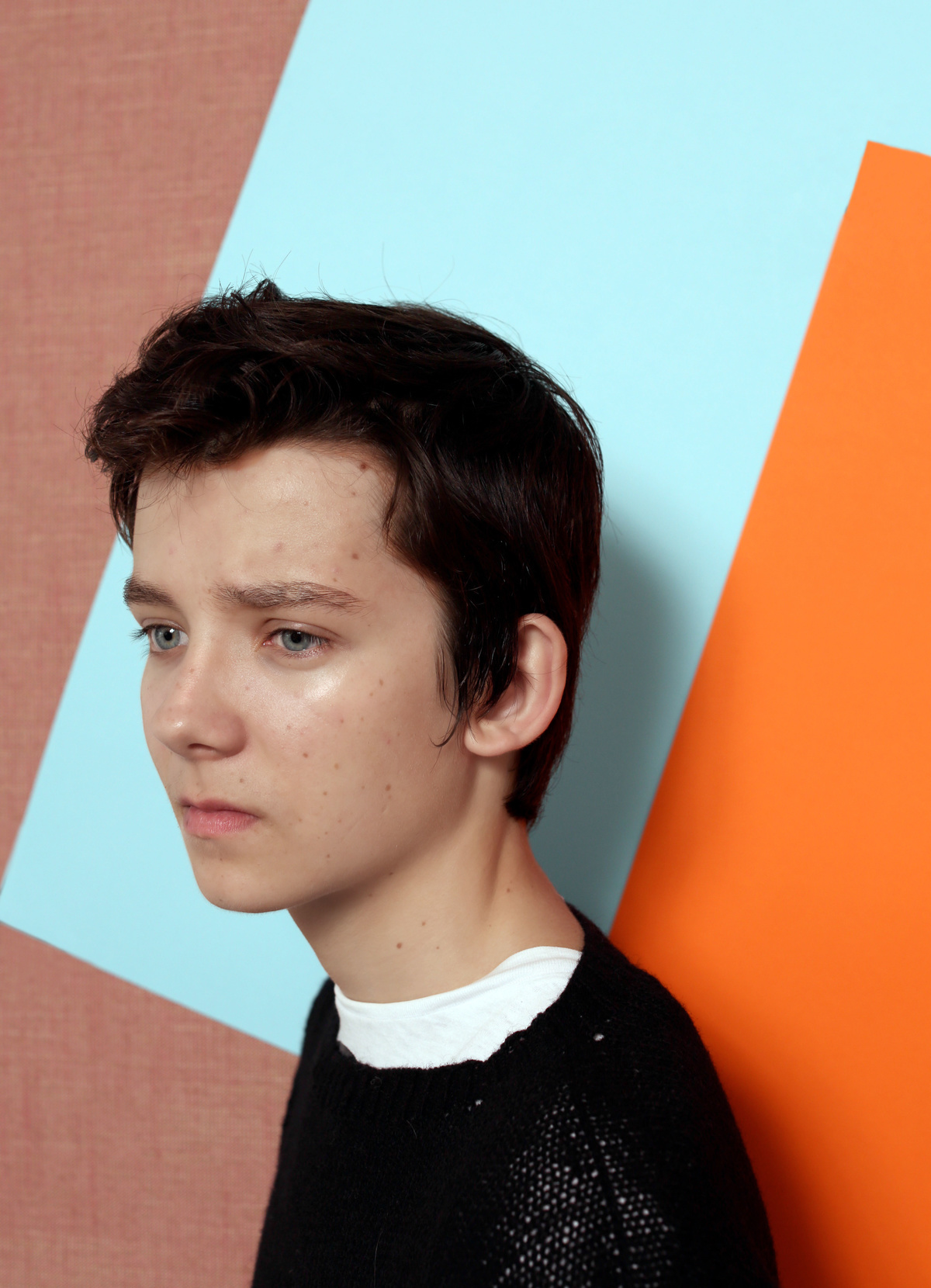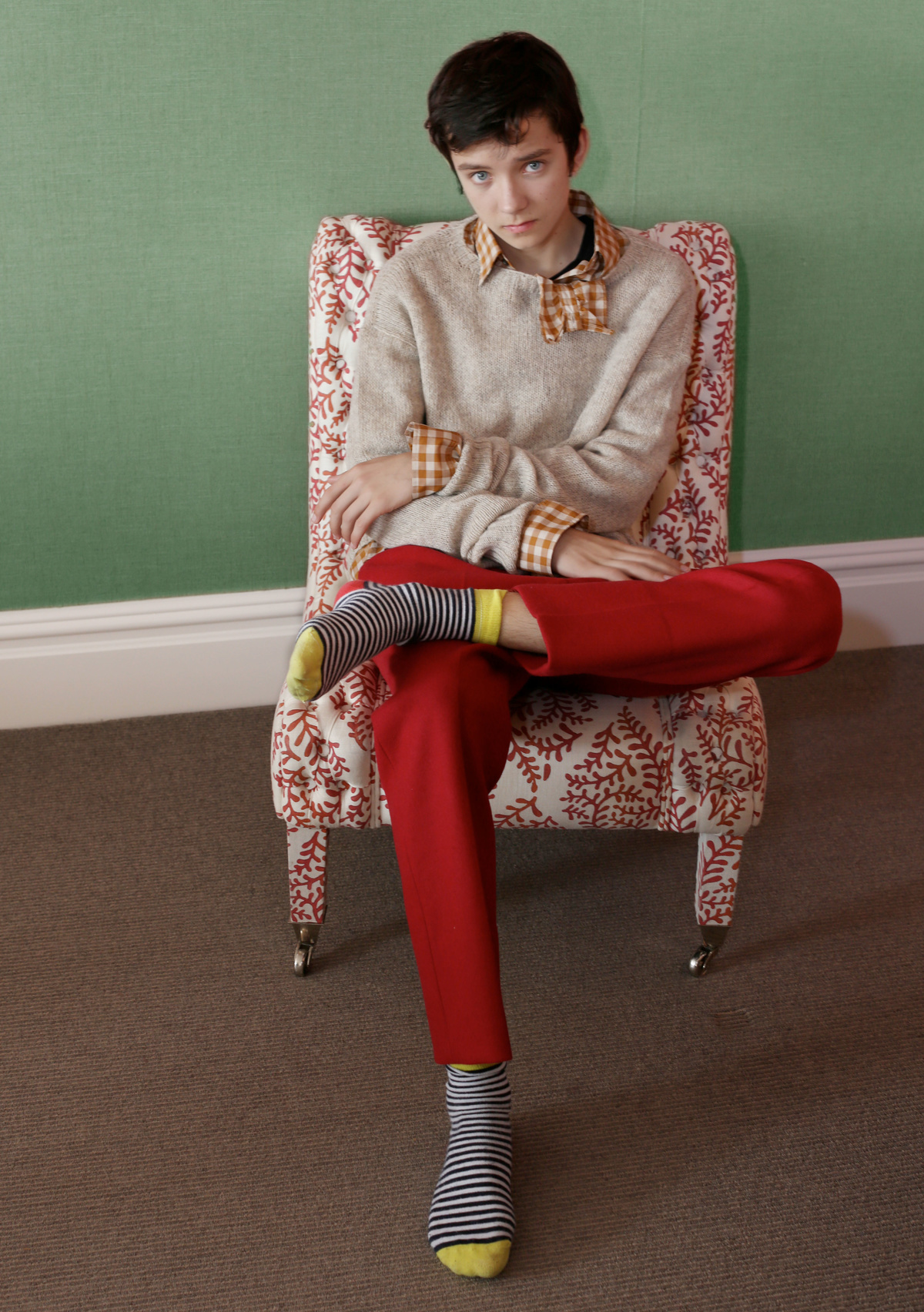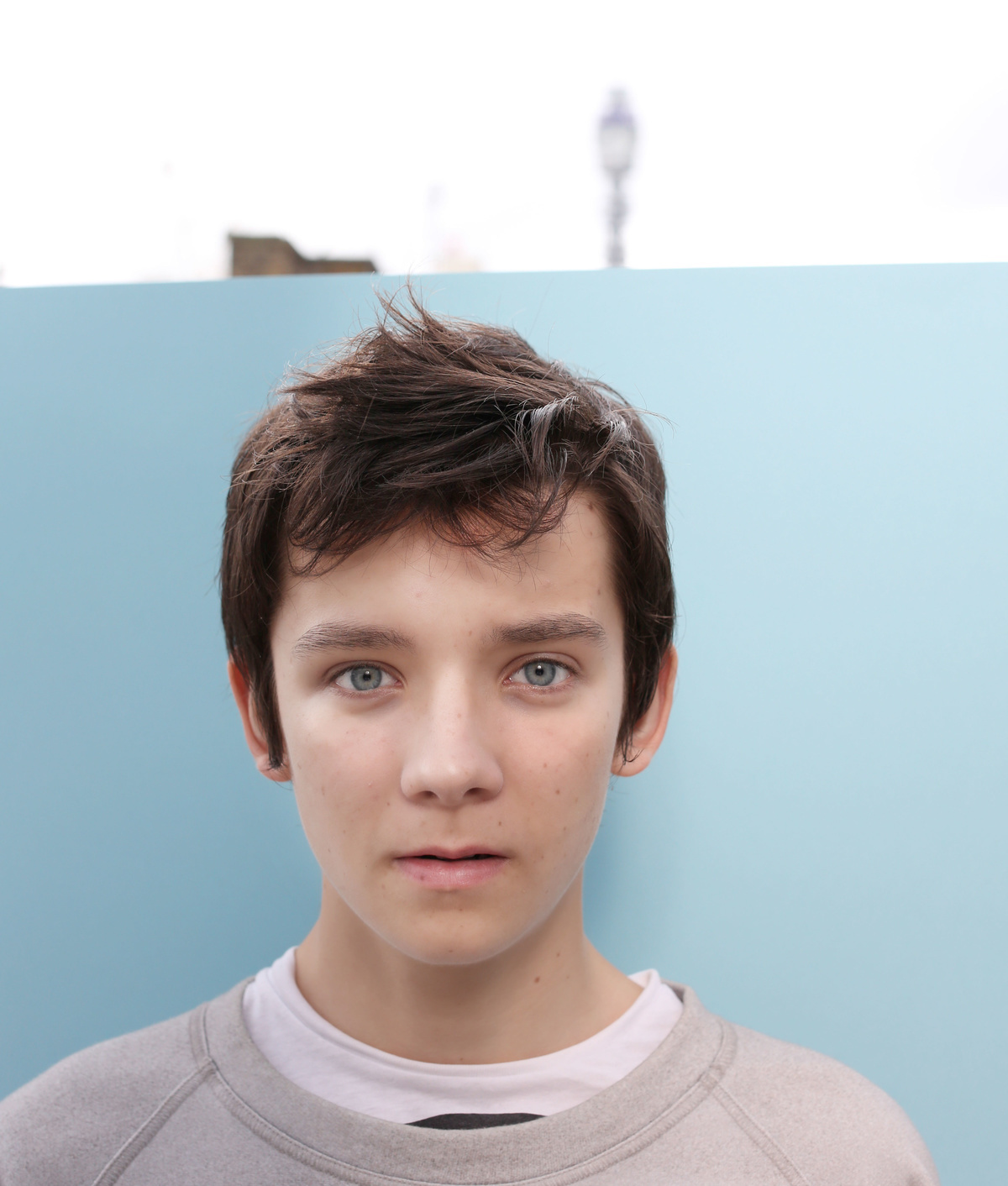Before Asa Butterfield stands up to shake hands, he has to unfold himself from the sofa. The pixie-like boy with the wispy hair and sky-blue eyes looks like a tiny child-rendering of Johnny Depp in Martin Scorsese’s Hugo, Mark Herman’s The Boy in the Striped Pyjamas and Susanna White’s Nanny McPhee. But a man stands before i-D; long and rangy limbs with a low, slow voice. Asa (meaning “wing” in Portuguese) may just be getting his GCSE results next week, but he’s had to grow up quickly.
Aged ten, he found himself running through a Nazi death camp (in The Boy in the Striped Pyjamas), David Thewlis’ SS officer screaming after him. At 14, he was being directed by Martin Scorsese. Since then, those fey looks and bright baby-blues have got him a few admirers; every time he tweets, it goes out to 97,000 followers. He has fan websites and Tumblr pages dedicated to him, which isn’t bad for a 16-year-old.
Filming Ender’s Game was an awesome experience. Kids flying around in zero gravity shooting laser guns. What’s not to love?
After he ventured from his parents’ home in Barnsbury, he’s started to get a bit of attention. Asa is quiet, unassuming and reassuringly normal, even when he admits to how accustomed he is to having his photo taken: “It’s such a part of my life now,” he says. The only actor in his family, Asa attends a comprehensive in Hackney where he’ll remain for his A-levels. Acting just “came along one day,” and he keeps it totally separate from his otherwise teenage life, in which his interests include, “Playing computer games, listening to hip-hop, drumming, hanging out with my mates and going to the park to play football.”

Asa was head-hunted to star in Gavin Hood’s film – the closest Hollywood can get to a guaranteed product. Based on Orson Scott Card’s 1985 best-seller, costing $110 million, with fellow child-acting prodigy Hailee Steinfeld as the romantic lead, and co-starring a couple of blokes called Harrison Ford and Sir Ben Kingsley, Ender’s Game (released October 2013) has positioned itself very openly as a sleek and machine-tooled alternative to The Hunger Games. But this is a blockbuster far more epic than Suzanne Collins’ trilogy; imagine Starship Troopers juiced and souped-up for the X-Box generation. Somewhere in the near future, and at great cost, mankind has survived two invasions from an insectoid alien species, but won’t survive a third. Asa plays Ender Wiggin, a sullen, quiet child who “sees things in a way we can’t.” Ford’s commander spots Ender as a child so naturally capable in the art of warfare he could become mankind’s saviour. Ender is whisked to a training centre orbiting around the earth where, along with the world’s other talented child-fighters, he’s honed into a lethal operator through increasingly difficult games. “Kids flying around in zero gravity shooting laser guns,” he says, “that’s the kind of thing I love. But I looked at it on the internet, and realised how much deeper it was.” For all its breadth and scope, its mind-bending set pieces and space-scapes, at the centre of Ender’s Game lies Asa. As demonstrated by the trailer, everything orbits around him; the camera frames his eyes as he looks determinedly into the arena of a zero gravity battle. It’s a close-up of his face we see as he first experiences the wonder of floating unaided through air. It is him at the bridge of a Leviathan spaceship, conducting and controlling, with impossible speed, an entire fleet of Earth’s ships against arachnid crusaders. “I didn’t get Ender when I first read the script,” he says. “I read the book, went on Google, and talked to Gavin [Hood] on Skype. I started to realise he’s going through this real struggle with his siblings. I got chills playing him in those moments.”
When I’m not acting, I enjoy doing what every other 16-year-old boy does, playing computer games, listening to hip-hop, drumming, hanging out with my mates and going to the park to play football.
Asa has his own siblings, an older brother and a four-year-old sister (“She’s still in the adorable stage. I’m sure that’ll change,” he says), but Ender’s mindset took a lot of imagination. It’s a story about the sacrifices we ask of those who fight for us, about the toll combat takes on those who die and those who survive. Asa refers to the “darkness” of his character throughout the interview, of the emotions Ender must go through as and while he’s turned into an ice-cool killer, of the moral choices he must face, even if it means doing the wrong thing for the right reasons: “He’s isolated from his friends and his family in this battle school. He’s getting bullied. He’s not sure who he is yet. He’s locked into this conflict with his own brother, who’s this terrible person, while he relies on his sister’s compassion. Sometimes he sees his brother in himself, and it makes him hate himself.”

In the exclusive scenes screened for i-D, we see Ender’s first experience of zero gravity battling, a set piece sequence that seems to be the franchise’s signature move. Asa lights up when asked about it, “an awesome experience,” he says, but it was nine-hour days of hard, physical work: “You have a harness around your waist, and if you relax you just fall over in the middle. You have to make it look like you’re in zero gravity. So you’re constantly tense, flipping over at a steady pace. And you have to act at the same time. We had a lot of training, and we were obviously very professional. But we played around a lot as well.” The film was shot over five months, primarily in New Orleans, Louisiana.
Gavin Hood, the South African director – known for his social message films Tsotsi and Rendition before he broke into Hollywood with X-Men Origins: Wolverine – built the sets for Ender’s Game: a complex of inter-joining rooms that could be used for each interior scene of the film. “As an actor, when you’re standing there surrounded by what you would have if the character is really alive, that makes so much difference,” Asa says. Like Daniel Radcliffe and Robert Pattinson before him, Ender’s Game is undoubtedly going to throw Asa into the stratosphere. He may look like a humble teenager with polished looks, but he seems ready for it. If he’s ever felt true nerves, it was only once: “When I walked into the set of Hugo, I hadn’t clocked just how massive Martin Scorsese is,” he admits. “I hadn’t seen any of his films because they’re all 18s. It wasn’t until I started taking in people’s reactions that I realised how huge it all was. It felt like the biggest moment of my life.”
After Ender’s Game has rolled out, Asa will return to London to work on a small independent project. Starring opposite Sally Hawkins and Rafe Spall, he’ll play a boy with Asperger syndrome: “The last few films I’ve done have been on such a huge scale, but this has been bubbling away in the background since before I even heard about Ender’s,” he says. “It’s a very personal project, on a really intimate scale. I’ve met and talked to a lot of people with the condition. My character is really high-functioning and very smart, but he has a hard time talking to people and can’t connect at all. It’s going to be a difficult part. I’ve got to get it right. I can’t wait to do it justice.”
Ender’s Game is released on DVD today.
Credits
Text Tom Seymour
Photography William Selden
Styling Matthew Josephs
Photography assistance Tea?n Roberts
Grooming Emma Day at Milton agency using Aesop Skin Care
Special thanks to Soho Hotel
